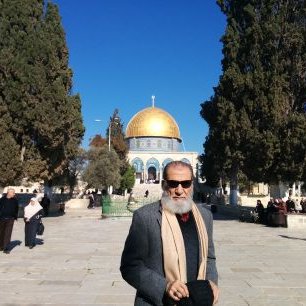
The history, culture, and heritage of Hyderabad is not just the fabulous wealth once possessed by its erstwhile ruler Mir Osman Ali Khan, the V11 Nizam of the Deccan, and his umpteen offsprings and their offsprings from his many wives and concubines, but more importantly and lastingly the magnificent public and state buildings that he built during his rule, which stand to this day as a testimony to his benevolence, patronage of art culture and the architectural excellence of the Asif Jahi’s. Though regrettingly some of these structures have been abandoned by purpose to become ruins or are decaying. While heritage buffs and NGO’s continue their campaigns unabatedly for the preservation of these heritage sites.
Osmania General Hospital
The Osmania General Hospital (OGH) which is currently hogging much space in the media, not because it’s an architectural marvel rich in heritage and also a large affordable medical facility for hundreds of people of the state for hundreds of years, but for the unfortunate and uncalled for intentions of the state Chief Minister, Shri K Chandrashekhar Rao(KCR) who wants to get rid of the structure assuring that a new modern medical complex will be built on the site. There are many doubts and questions making rounds in political, business circles, and among property developers as how much space the new hospital facility will be allotted, “if, a big if” at all KCR is to get his way. Presently, the once princely building, now in a dilapidated state was originally spread over 32 acres of land, placed idyllically on the banks of the river Musi, with lots of open space, gardens, promenades, and sidewalks of which nothing remains, except heaps of unattended garbage, open sewers, battery of alms seekers lodging on the sidewalks, pack of stray dogs that often intrude into patients wards in search of food, and encroachments of all sorts usurping five acres of the OGH land. Obviously, the new facility will not be built on 27 acres. What will happen to whatever is left vacant is questions uppermost in the minds of concerned public and politicians?
Erram Manzil building
And this is not the first heritage site the government is going after. Previous efforts at acquiring the Erram Manzil building, turning into rubble and then rebuilding it as state assembly building was turned down by the Telangana High Court on a PIL Petition. The T.B. and chest Hospital in Erra Gudda. Polo Bison Parade Grounds in Secunderabad were also targeted by the government but had to be abandoned under public gaze and opposition hue and cry. The Chief Minister seems to be practicing tightrope walking. Once he is all kisses for the old times of famous Deccani Ganga-Jummani Tehzeeb and next, he is full cylinders after heritage sites of this historic city, despite many buildings protected by the High court rulings.
Politicians are one lot who have the canny knack of getting around their end’s one way or the other. Facing a lot of flak from Heritage activists, the general public, online petitions protesting the demolition plans pouring in from as far away as the US and Australia, and opposition parties, the government has resorted to a proxy war recruiting doctors and paramedics of OGH who are now on relay protests calling on the government to immediately start construction of new premises( media reports). There is also this question as to why the government had not utilized funds allotted for the maintenances of heritage buildings in the state. according to media reports an estimated 19 crore rupees had been allocated for the upkeep of OGH. According to a report in Hindu, the OGH is not in any danger but is stable, whatever the damage is due to negligence for a long time.
Given the situation, and the manner in which KCR is bent upon wiping away heritage sites from the city landscape reflects on the provincialism of the powers to be, who lack the understanding and culture of preserving historic buildings and monuments that go a long way in establishing cultural space in the comity of nations. Languages, poetry, folklore, music, sartorial, and gastronomy are not deep enough to retain heritages in a pristine form, they mutate for good or bad with times as tastes and preferences also mutate with political and social changes. But monuments, buildings, and structures are durable and tangible icons of one’s past heritage when maintained accordingly for posterity, experts and activists claim.
OGH is no ordinary building
The OGH is no ordinary building, its architectural impact is versatile, highlighting a magnificent combination of the Saracens, Moghul, and Asif Jahi. The country’s leading architect Satish Grover writing about the bulbous domes that are the dominating feature of many of the Islamic buildings and which form an outstanding feature of Asif Jahi architecture, like the OGH, High Court, State Assembly Building State Library, City College, Kachiguda and Nampally Railway Stations, extract the maximum structural potential from the small elements of building material and endowed with stability and endurance. The OGH barrel vault, transverse arches, lancet arches, the stained-glass windows though badly bruised but still command a kind of awe can never be rebuilt or replicated with the same grace and excellence.
Old Hyderabdees, who are dwindling fast, claim (claims are claims) that Osman Ali Khan when building the landmark Osmania Hospital followed the example of the eighth-century renowned Arab physician, Abu Bakr Muhammed Ibn Zakaria Al Razi, who asked by the Caliph to select a site for the great Baghdad Hospital hung up shreds of meat in different places of Baghdad city, choosing the spot where they showed the least signs of putrefaction.
Heritage, as said, asserts societies’ collective identity and is a source of pride and part of our rich past that tends to be forgotten by generations that come after. It runs into trouble and is disputed when it is linked to cultural superiority.

